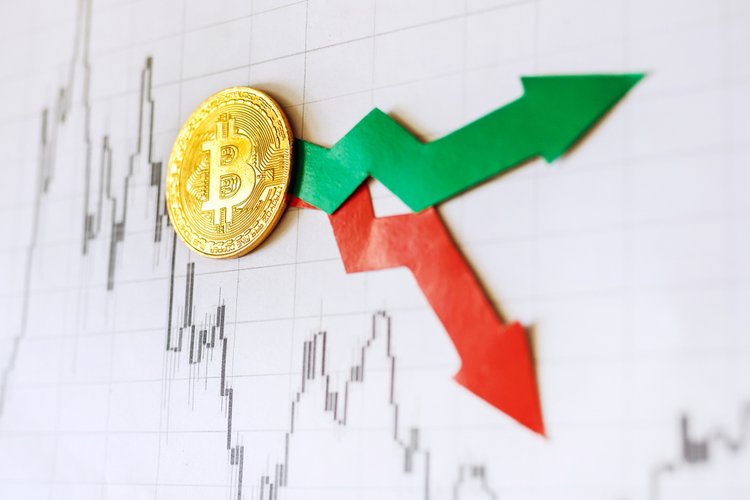While digital currencies have been making headlines for the past couple of years, they remain out of reach for many. The words “blockchain” and “cryptocurrency” are still more likely to spark up confusion rather than genuine interest. Our guide will give you a basic understanding of the market and its risks before you set out to make an investment.
Why are cryptocurrencies so popular?
Cryptocurrencies are quickly becoming a popular investment asset, primarily for two reasons - high returns and revolutionary technological potential. While traditional investment instruments include shares, bonds, and real estate, none have produced the returns that digital currencies have over the past year. There were plenty of strong performing stock markets in 2017, but none could compare to the astronomical rise of crypto. The top-performing stock market last year was Zimbabwe, growing by 117.7 percent - Ripple (XRP), however, blew Zimbabwe out of the water with a 28,963 percent return.
One of the key reasons behind the surge is the technology behind cryptocurrencies - blockchain, “a digital ledger of economic transactions that can be programmed to record … virtually everything of value”, to quote Don and Alex Tapscott. Blockchain reduces human error, increases transparency between market agents, and cuts out the middleman in financial transactions, putting the “power back into the hands of the user”. While many are enthusiastic about its potential, no one is sure how many blockchain-based currencies will survive.
Potential macro risks
Take care of the due diligence before you put your money at risk - carefully research the market, evaluate its stability, carry out background checks on each asset, hedge your bets and keep tabs on the legal climate.
Is it a bubble?
Speculation over a crypto-bubble is endless. Multiple experts have voiced their concerns over cryptocurrencies’ long-term viability. JPMorgan Chase CEO Jamie Dimon famously called bitcoin a “fraud” at the end of last year, while Yale’s Nobel Prize-winning economist Robert Shiller said that “none of this is new”, comparing cryptocurrencies to previous unsuccessful monetary experiments. Dimon, however, has since softened his rhetoric, stating that “blockchain is real”, and that he is “open-minded” about cryptocurrencies in a January Fox interview. Several months later, JP hired Oliver Harris, the bank’s 29-year old fintech head, to spearhead its crypto-assets strategy. While skeptics are finding it harder to dismiss digital currencies, and institutional investors are warming up towards crypto, there is still the possibility that this could be a bubble. Shiller’s warnings about the housing and dot-com bubbles turned out to be valid, so it may be worth asking yourself whether you want to be in the crypto market long-term.
Volatility
As a first-time investor in any cryptocurrency, you need to consider the volatility of the market. One look at bitcoin’s price over the past 6 months is indicative of the potential risk involved - the currency opened the year at around $13300, gradually halving in value to around $6600 in July. Market dynamics are changing weekly, as millions of participants join in, and any investment could evaporate through devaluation or cybercrime.
Legal climate
The legal status of cryptocurrencies is still up in the air - while the majority of countries haven’t outlawed crypto outright, its status as a currency (or commodity) has different regulatory implications. Depending on the jurisdiction, potential cryptocurrency investors could be liable to pay capital gains tax and/or VAT.
Picking your assets
If you’re still interested in taking the plunge, then it’s time to zero in on the currencies you want to buy. There’s no strict rulebook for picking assets, be it stocks or cryptocurrencies, but there are still a number of questions you should ask yourself before investing in a coin:
- Is this a potential scam? Research the development team’s background - are you about to hand over your money to known scam artists? Does the project seem like a well-rehearsed marketing ploy with no backup? Lots of ICOs have a pretty webpage with little substance - for a coin to have long-term value, it needs to back a project that has a real-world use case.
- Does my coin have a long-term plan? Go through the project’s white paper, make sure you understand the team’s goals, and assess whether they have the means to achieve them.
- Do I have an exit strategy? You might not want to hold on to certain coins for too long, so make sure you establish a timeframe and an acceptable ‘exit’ price to ensure yourself from large losses.
Starting your investment
- Set aside the required funds. Any investment requires planning, so you need to decide how much and how often you would like to invest in crypto assets. Determine the potential size of your cryptocurrency portfolio - don’t put all your eggs in one basket. Earmark an amount and wait for the appropriate opportunity.
- Pick your assets. Run through the above checklist and make sure you’re fully confident in your selection.
- Register on a cryptocurrency exchange. Trading takes place on exchanges - places where one can buy cryptocurrency in exchange for fiat. Coinbase, Bitfinex, Huobi, Gemini and Bittrex are some of the largest. There are multiple ways by which one can judge the quality of an exchange - liquidity, spread, fees, purchase and withdrawal limits, and user-friendliness. Different exchanges offer different cryptocurrencies, so make sure you pick the ones that match your desired portfolio.
- Create a wallet. Exchanges offer built-in wallets, often labeled ‘hot’ wallets as they store your coins online. While this is convenient when trading, it is not recommended that you keep all your assets online long-term.
- Buy the chosen cryptocurrencies. If you’re having issues with this, contact your exchange’s support team, and they’ll be happy to help.
- Transfer your coins to ‘cold’ storage. Moving your assets offline to a ‘cold’ software wallet (like Mycelium and Exodus) or hardware wallet (like the Ledger Nano S, Trezor and Keepkey) reduces the risk of your coins being hacked or stolen. This is a highly-recommended option for anyone that wants to keep their crypto safe.
By Insider.pro





